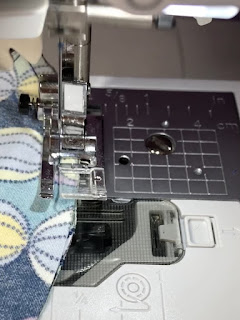This article is brought to you by Lizzsews.
Are you interested in learning how to sew? This article is the sixth 'unit' in the learning to sew article series. Follow along, let's learn how to use your sewing machine together!
Recommended read: Learning to sew article series
Sewing pivots and curves is a vital skill when it comes to sewing. In this article, I will guide you through sewing curves and pivots on fabric!
1. Grab two pieces of cotton fabric
Place the fabric underneath the presser foot and line it up!
2. Staircase
Either using a fabric pen, just a normal old pen, or sharpie, draw a staircase on the fabric.
Sew along this line pivoting when you reach the corner. Reverse stitch at the beginning and the end.
4. Zigzags
Draw a zigzag on the fabric. Sew along this line, pivoting when you reach the end of the diagonal lines on the zigzags. Reverse stitch at the beginning and the end.
5. Curve
Either using a fabric pen or just a normal old pen or sharpie, draw a curve on the fabric.
Curves are a little bit trickier; they involve both a lot of pivoting and they need good hand placement. Curves involve a good amount of pivoting, make sure to pivot or you’ll end up with bunched fabric and an awful line is sewn! Your left hand should lightly guide the fabric whilst being placed directly beside and to the front of the presser foot. Don’t forget to reverse stitch.
Optional: Test yourself more, try drawing a curve on the fabric and cutting on this line. Try to sew along the edge of the curve.
Optional: Try pinning the two fabrics together before sewing, take out the pins as you sew.
6. Mixture!!
Draw staircases, zigzags and curves on the fabric! Don’t forget to add in a few straight lines too!
This step is the most difficult and the most fun! Take your time and really try to sew on those lines. This mixture of sewing all of these different techniques is great practice before your 'final exam' where you're going to sew a pillowcase.
----------
Wow! We've come a long way and learned a lot. Congrats! Now that you have learned a lot more about your sewing machine, make sure that you take a break after all that good and fun hard work!
Continue to practice sewing on fabric until you’ve mastered it. And once you're ready, head on over to your 'final exam' where you will put your skills to the test with your first sewing project.
Recommended: Learn sewing
Recommended: Sewing projects
Leave a comment below and let me know if you made a straight line on the paper! And don't forget to subscribe to stay up to date with all of Lizzsews new articles. See you next time!


Comments
Post a Comment